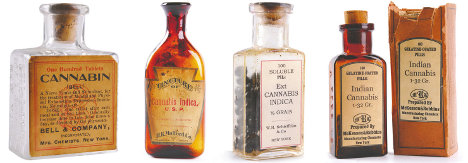By Stephen Vance, Staff

Controversial changes to Canada’s medical marijuana program will see the growing of cannabis for medicinal use shift from the patients to private companies.
Some see the move as the birth of a new industry in Canada that could provide jobs and tax revenues, while others have challenged the proposed changes in hopes of protecting the rights of patients who for many years have been allowed to grow their own medicine, which can be significantly cheaper than purchasing from a large-scale producer.
A federal court judge issued an injunction last month exempting patients who had been previously licenced to grow and possess medical marijuana before the new regulations were implemented on April 1 of this year.
A group of patients and patient advocates who are mounting a constitutional challenge over the issue had asked for an injunction to preserve the status quo until their legal case goes to trial.
Legal battles over who will be able to grow medicine for Canada’s thousands of patients who use medical marijuana aside, many wonder what is medical marijuana, who uses it, and for what?
According to the Executive Director of the Canadian Medical Cannabis Partners (CMCP), Jennifer Collett, patients using medical marijuana range from children to grandmothers, from factory workers to business executives, and it is quite likely that there are patients using marijuana in your own neighbourhood.
Whether to help control nausea for cancer patients undergoing chemotherapy, to control chronic pain, as a treatment for insomnia, or even as a treatment for seizures in children, the potential benefits of marijuana are many, as are the various ways to use the plant. While the word marijuana may cause many to think of a tie-died shirt clad hippie smoking from a water pipe, many patients don’t smoke the plant at all. Tinctures, oils, edible foods, juices, and salves are just some of the many ways that the cannabis plant is processed for use in the medical marijuana sector.
“Typically the media has captured the ‘stoner’ side of the medical marijuana issue. But they haven’t looked, and don’t really want to look for the real patient who just stepped out of the gym. Because that’s who we are, we can go to the gym because we take this medicine, or we’ve rebuilt muscle, or we’re eating again, and we’re looking good because we take this medicine. That’s not what the media wants to see, they want to see the ‘cripple in the wheelchair’,” Collett told The Independent in a recent interview.
Collett’s organization advocates for patients and caregivers who volunteer their time to changing the ways patients are affected by the system. The CMCP lobbies provincial and federal governments on behalf of the best interests of patients.
Both of the primary cannabis strains are used to treat patients. The Indica strain provides a strong physical body high that can make patients sleepy, and provides a deep relaxation feeling compared to a Sativa, which is known to be more energetic and uplifting.
“They are used differently for different illnesses, not just pain. A high CBD (indica) is my passion, however the sativa dominant strains are extremely important to have available for patients to find what works for them,” explained Collett.
Marijuana strains range from pure Sativas to pure Indicas and hybrids consisting of both Indica and Sativa. Because Sativa and Indica buds have very different medicinal benefits and effects, certain strains can be targeted to better treat specific illnesses.
While Collett is supportive of communities who are welcoming larger-scale producers of medical marijuana into their towns, she says that it is crucial that the rights for patients to grow their own medicine are retained.
“I think it’s really important to acknowledge the need for small personal gardens if we want to enable patients to make juices and tinctures. Ultimately this is about rights. We are fully within our rights to grow our gardens, but how to do it with the respect for the good of all, should be the concern. There are legitimate concerns for production in homes if it is not regulated to a certain degree, however there is no danger to growing it in your garden with your other food. The average person just wants to grow something that helps them feel better, they are not looking for crazy high THC strains, and most likely haven’t the desire to mess with what they know works for them. We aren’t looking to party, we are looking to live better,” explained Collett, who added that she doesn’t enjoy ‘getting high’ herself, and so she ensures the products she uses for herself will treat her condition without a high.
“I personally don’t like getting high, it makes me really uncomfortable. This is one of the reasons I don’t like pharmacy pain killers. The amount I need to cut the pain rocks me off my feet and I end up a drooling mess. I can’t function like that. But I take between 12-16 (grams of cannabis) a day sometimes and can stay ‘sober’. How? It’s the strains I use. It’s the way I use it. In a capsule I take a concentrate. Ten grams of raw material is taken in a concentrate, between three or four capsules a day. I can eat an infused oil in my food by using the coconut or olive oil infusion in my baking, salad dressing or in my daily cooking,” said Collett.
Collett commended Meaford’s staff and council for taking a proactive approach in preparing policies for the establishment of a medical marijuana growing and processing facility in the municipality.
“(Medical grow) facilities can be an incredible benefit to any community. The industry they introduce is expandable into many products, which means more jobs, more benefit to local economies and a better overall awareness of our health,” offered Collett.











